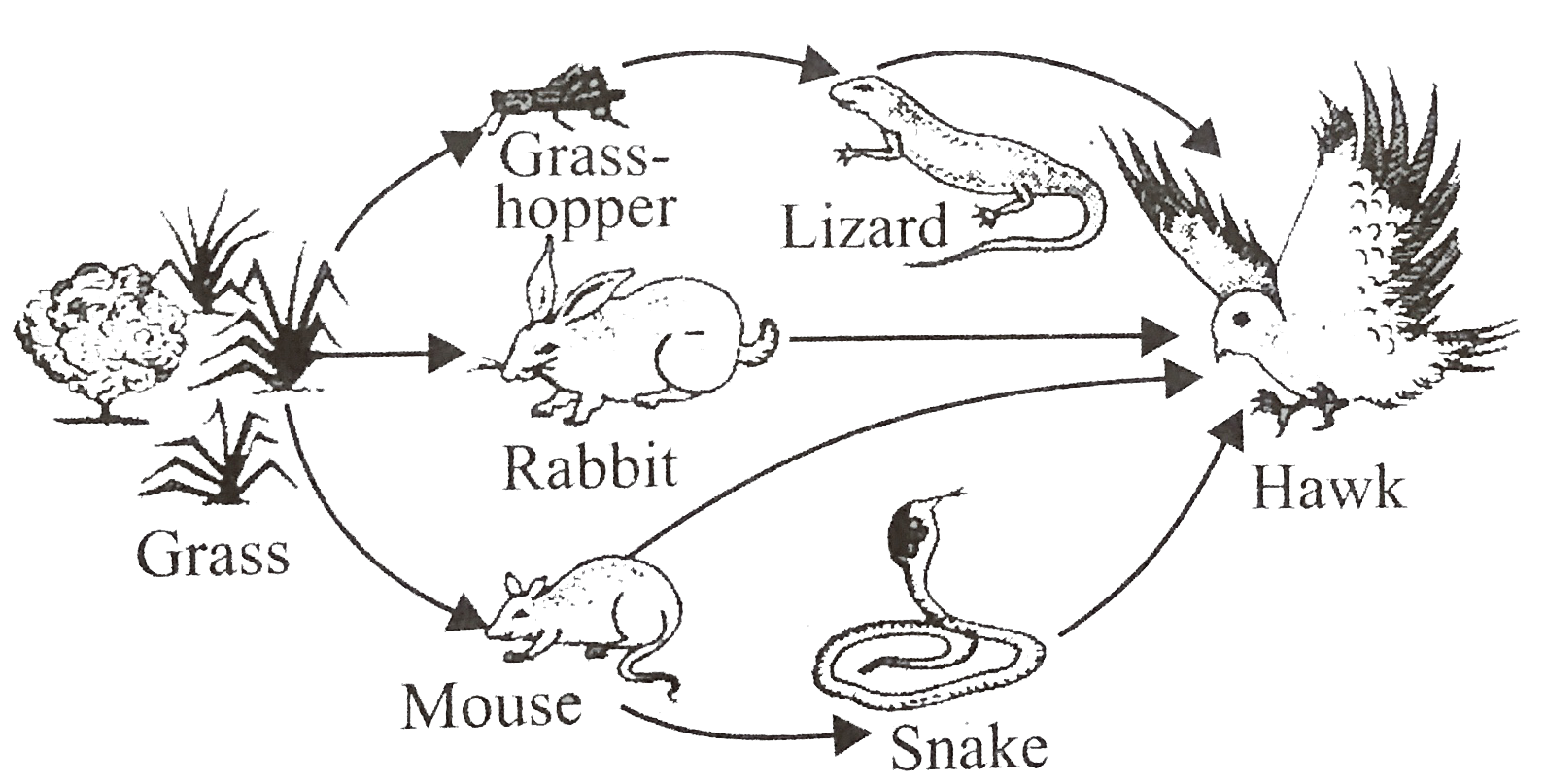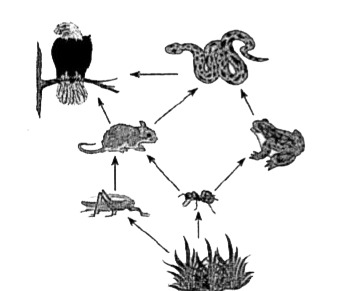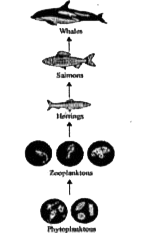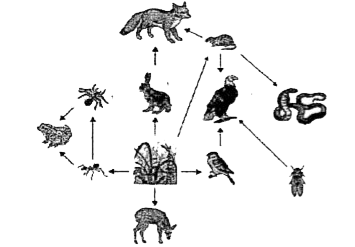The given figure shows a food chain.
Plant → Grasshopper → Mouse → Snake → Eagle
In the given food chain, a decrease in mice population will cause an increase in the population of
Grasshopper
Snakes
Plants
Eagles
To solve the question about the food chain and the impact of a decrease in the mouse population, we can follow these steps:
1. Understand the Food Chain: The food chain provided is:
- Plants → Grasshopper → Mouse → Snake → Eagle
This indicates that plants are the producers, grasshoppers are primary consumers, mice are secondary consumers, snakes are tertiary consumers, and eagles are apex consumers.
2. Identify the Impact of Decrease in Mice Population: The question asks what happens if the population of mice decreases. Mice are secondary consumers that feed on grasshoppers.
3. Analyze the Effect on Grasshoppers: If the population of mice decreases, there will be fewer mice to consume grasshoppers. This means that grasshoppers will not have as many predators, leading to an increase in their population.
4. Consider the Impact on Snakes and Eagles: With fewer mice, snakes (which feed on mice) will have less food available, leading to a decrease in their population. Consequently, eagles (which feed on snakes) will also have less food, resulting in a decrease in their population as well.
5. Conclusion: The decrease in the mouse population will lead to an increase in the grasshopper population, as they will have less predation from mice.
Final Answer:
The population of grasshoppers will increase.
---
- Plants → Grasshopper → Mouse → Snake → Eagle
This indicates that plants are the producers, grasshoppers are primary consumers, mice are secondary consumers, snakes are tertiary consumers, and eagles are apex consumers.
The population of grasshoppers will increase.
Topper's Solved these Questions
- OUR ENVIRONMENTBOOK - BETOPPERSCHAPTER - OUR ENVIRONMENTEXERCISE - CONCEPTIVE WORKSHEET
70 Videos
- OUR ENVIRONMENTBOOK - BETOPPERSCHAPTER - OUR ENVIRONMENTEXERCISE - SUMMATIVE WORKSHEET (MULTIPLE TYPE QUESTIONS)
6 Videos
- LIFE ON EARTHBOOK - BETOPPERSCHAPTER - LIFE ON EARTHEXERCISE - SUMMATIVE WORKSHEET
5 Videos
- SOILBOOK - BETOPPERSCHAPTER - SOILEXERCISE - SUMMATIVE WORKSHEET
14 Videos
Similar Questions
Knowledge Check
In the given food web, and increase in the population of hawks will not result in
 Adecrease in the population of rabbits and sankesBdecrease in the population of mouseCdecrease in the population of lizardsDincrease in the population of grasshoppers.
Adecrease in the population of rabbits and sankesBdecrease in the population of mouseCdecrease in the population of lizardsDincrease in the population of grasshoppers.In a food chain, the largest population is that of
Aprimary consumersBtertiary consumersCproducersDdecomposersIn a food chain, the largest population is that of
AProducersBDecomposersCSecondary consumersDPrimary consumers

In the given food web, if there is an increase in the snake popnlation, then there would be a decrease in the population of
View SolutionWho are the producers in the given food chain?

View SolutionThe given figure represents a food web.

A decrease in the population of rabbits will greatly affect the population of
View SolutionThe given figure shows a·food chain operating in a terrestrial habitat.

Which organism is the primary consumer in the given food chain?
View SolutionIn a food chain, the largest population is that of
View Solution


